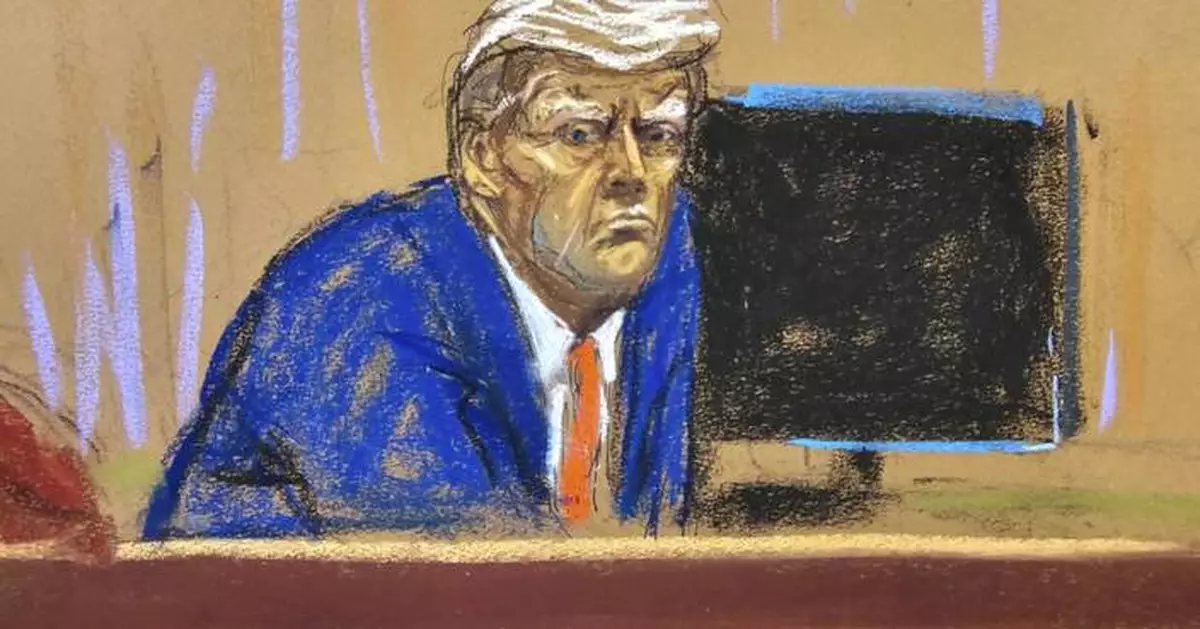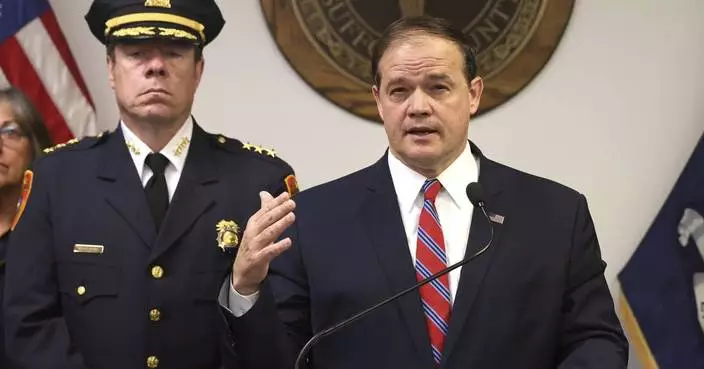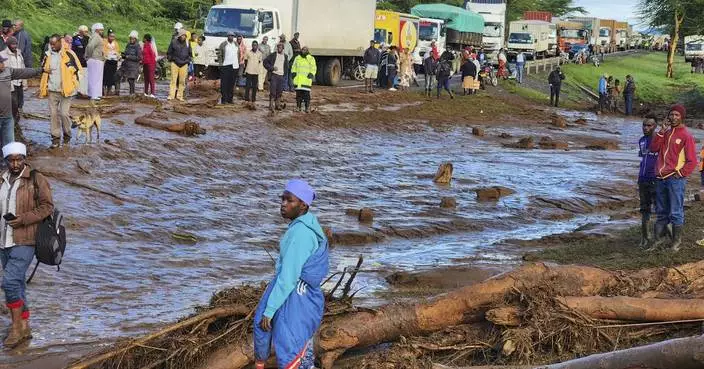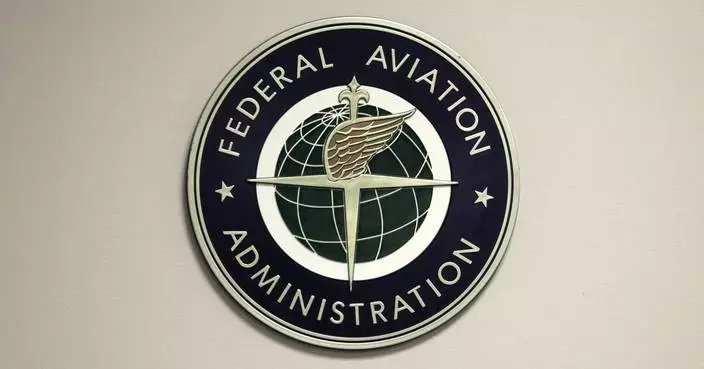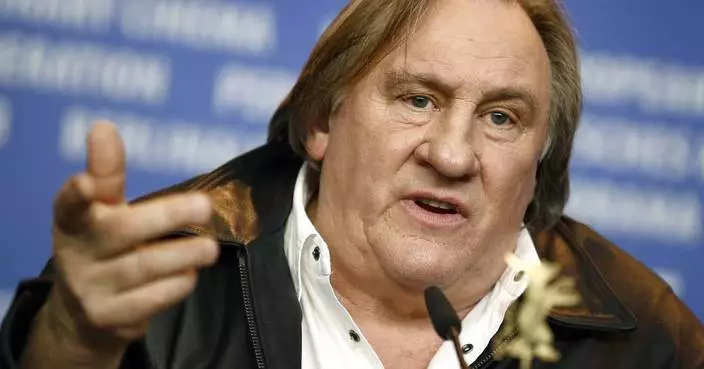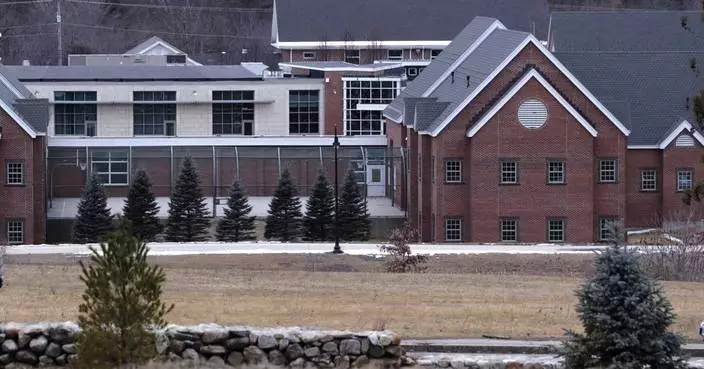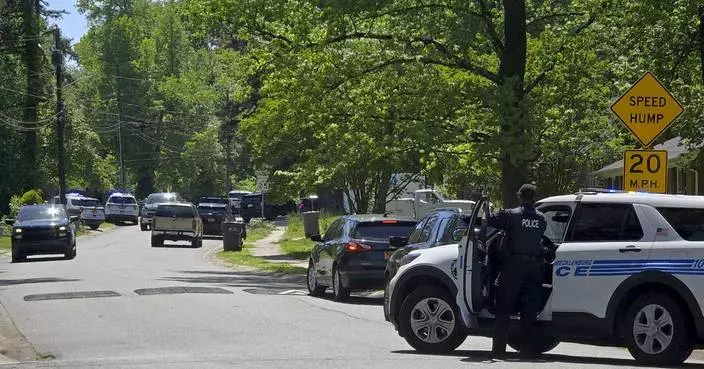NEW YORK (AP) — It's a moment in history — the first U.S. president facing criminal charges in an American courtroom. Yet only a handful of observers are able to see or even hear what is going on.
Instead, most of the nation is getting news of former President Donald Trump's hush money trial secondhand. Starting with preliminary motions and jury selection Monday, reporters in a Manhattan courtroom must convey what is being said to the outside world after the fact.
That's all because New York state law regarding media coverage of court proceedings is one of the most restrictive in the country. Last week's death of O.J. Simpson, whose murder trial beamed live from a California courtroom captivated a nation three decades ago, was a telling reminder of how New York is behind the times — or, at least, a holdout.
Regulations limiting media coverage in courtrooms date back nearly a century, when the spectacle of bright flashbulbs and camera operators standing on witness tables during the 1935 trial of the man accused of kidnapping and killing Charles Lindbergh's baby son horrified the legal community, according to a 2022 report by the New York-based Fund for Modern Courts.
Rules to enforce decorum spread nationally, amended to account for the invention of television, as defense lawyers worried that video coverage would harm their cases, the report said.
Yet an interest in open government chipped away at these laws and — slowly, carefully — video cameras began to be permitted in courts across the country, often at the discretion of judges presiding in individual cases.
New York allowed them, too, on an experimental basis between 1987 and 1997, but they were shut down. Lobbyists for defense lawyers remain strong in New York and hold particular sway among lawyers in the state Assembly, said Victor Kovner, a former New York City corporation counsel who advocates for open courtrooms.
New York and Louisiana are the only states remaining that completely restrict video coverage, the Fund for Modern Courts said.
To Kovner and others, that's outrageous.
“We're the media capital of the world, we like to think, and the fact that cameras aren't permitted in one of our three branches of government is unacceptable,” said New York State Sen. Brad Hoylman-Sigal, who has sponsored a bill to try to change that.
“It's one of the most consequential trials of our modern age,” the senator said. “I think the public has a right to see exactly what happens in that courtroom.”
On the trial's first day, some reporters suggested that it appeared there were times that Trump drifted off to sleep while watching the proceedings. The former president's campaign disputed that. With no video camera in place and trained on him, there's no way of knowing for sure.
That's because the presiding judge, Juan M. Merchan, permitted a handful of still photographers to shoot photos of Trump before the day's proceedings started. Once court was called into session, courtroom sketch artists — a dying communications form — hold sway.
There is actually some video coverage of the trial, available on monitors in an overflow room adjacent to the main courtroom. It was packed Monday with reporters, court officers and a few members of the public, including Ron Sinibaldi, a former accountant from Long Island who lined up outside the courthouse before midnight for a seat.
“I read presidential biographies,” Sinibaldi said. “I go to presidential libraries. I'm here for the history.”
In a hallway outside of the courtroom, a limited number of cameras and a small pool of reporters are positioned to capture remarks of anyone involved in the trial who want to address the outside world. That included Trump, even before the proceedings started.
Absent live coverage of the trial, how often the former president chooses to take advantage of those cameras and whether news organizations carry his remarks either live, taped or not at all will play a big role in how the case is perceived publicly.
MSNBC carried his remarks live on Monday morning. “They're trying to grab the narrative regardless of the outcome,” CNN reporter Phil Mattingly said of the Trump defense team.
With some difficulty. CNN stationed a team on the streets of Manhattan outside the courtroom, where a truck festooned with pro-Trump flags frequently drove by, blaring horns and music from loudspeakers. Reporters sometimes struggled to be heard. “It is kind of a circus down here,” CNN's Kaitlan Collins said.
Commentators and experts, many of them with experience in jury selection, offered opinions from outside the courtroom or from studios. Fox News analyst Jonathan Turley said “most cities, at least those outside of New York,” will see the case as a weaponization of criminal justice.
With estimates that jury selection could take two weeks, and no way of showing it, journalists will have a lot of time to fill unless they turn their attention elsewhere.
Georgia, where Trump faces charges of election meddling, gives judges discretion over whether to allow television cameras. Superior Court of Fulton County Judge Scott McAfee has said he will make all hearings and trials in that case available for broadcast. That has already included hearings on whether Fulton County District Attorney Fani Willis would be allowed to argue the case.
Federal courts do not allow cameras in criminal cases. Trump is facing separate federal cases for election interference and mishandling classified documents, although it is not clear when, or if, trials will take place.
The feds offer one glimmer of hope: The U.S. Supreme Court permits audio of oral arguments to be broadcast outside of the courtroom. But there's no indication that this would apply to Trump's case. New York's law does not allow audio coverage of his hush money trial.
Proponents of legislation to open up New York courts to electronic media coverage are hoping the attention paid to the Trump case may boost their proposals. The idea is being considered as part of current negotiations over the New York state budget so, theoretically, a new law could even affect the Trump trial if it is passed and goes into effect immediately.
Given New York state's history, it's best not to count on it.
Associated Press correspondent Jennifer Peltz and Jake Offenhartz in New York, and Anthony Izaguirre and Maysoon Khan in Albany, N.Y., contributed to this report. David Bauder writes about media for The Associated Press. Follow him at http://twitter.com/dbauder.

Republican presidential candidate, former President Donald Trump speaks to the media on the first day of jury selection during his trial at Manhattan Criminal Court Monday, April 15, 2024, in New York. (Michael Nagle/New York Post via AP, Pool)

Former President Donald Trump, left, with his attorney Todd Blanche, speaks to reporters outside of the courtroom following the first day of jury selection for his trial at the Manhattan criminal court in New York, on Monday, April 15, 2024. (Jabin Botsford/The Washington Post via AP, Pool)

In this courtroom sketch, former President Donald Trump turns to face the audience at the beginning of his trial over charges that he falsified business records to conceal money paid to silence porn star Stormy Daniels in 2016, in Manhattan state court in New York, Monday, April 15, 2024. (Jane Rosenberg/Pool Photo via AP)
KYIV, Ukraine (AP) — NATO countries haven’t delivered what they promised to Ukraine in time, the alliance’s chief said Monday, allowing Russia to press its advantage while Kyiv’s depleted forces wait for military supplies to arrive from the U.S. and Europe.
"Serious delays in support have meant serious consequences on the battlefield” for Ukraine, NATO Secretary-General Jens Stoltenberg told a news conference in Kyiv with President Volodymyr Zelenskyy.
Outgunned, Ukraine’s troops have struggled to fend off Russian advances on the battlefield. They were recently compelled to make a tactical retreat from three villages in the east, where the Kremlin's forces have been making incremental gains, Ukraine's army chief said Sunday. The Russian Defense Ministry claimed Monday its forces had also taken the village of Semenivka.
“The lack of ammunition has allowed the Russians to push forward along the front line. Lack of air defense has made it possible for more Russian missiles to hit their targets, and the lack of deep strike capabilities has made it possible for the Russians to concentrate more forces,” Stoltenberg said.
Kyiv’s Western partners have repeatedly vowed to stand with Ukraine “for as long as it takes.” But vital U.S. military help was held up for six months by political differences in Washington, and Europe’s military hardware production has not kept up with demand. Ukraine’s own manufacturing of heavy weapons is only now starting to gain traction.
Now, Ukraine and its Western partners are racing to deploy critical new military aid that can help check the slow and costly but steady Russian advance across eastern areas, as well as thwart drone and missile attacks.
Zelenskyy said new Western supplies have started arriving, but slowly. "This process must be speeded up,” he said at the news conference with Stoltenberg.
Though the 1,000-kilometer (600-mile) front line has shifted little since early in the war, the Kremlin’s forces in recent weeks have edged forward, especially in the Donetsk region, with sheer numbers and massive firepower used to bludgeon defensive positions.
Russia also continues to launch missiles, drones and bombs at cities across Ukraine. At least four people were killed and 27 injured in a Russian missile strike on residential buildings and “civil infrastructure” in the southern Ukrainian port city of Odesa on Monday, regional governor Oleh Kiper said on the Telegram messaging site.
A turreted Gothic-style building known locally as the “Harry Potter Castle,” was seen in flames after the strike.
Russia is a far bigger country than Ukraine, with greater resources. It has also received weapons support from Iran and North Korea, the U.S. government says.
Drawn-out Ukrainian efforts to mobilize more troops, and the belated building of battlefield fortifications, are other factors undermining Ukraine’s war effort, military analysts say.
Nick Reynolds, a research fellow for land warfare at the London-based Royal United Services Institute, said the war “is still largely an artillery duel.”
He said he did not expect to see major movement of the front lines in the near term, but that “the conditions are being set for which side has military advantage at the front line. The Russian military is in a better position at the moment.
“When we see one side or the other being in a position to move the front line, at some stage, maneuver will be restored to the battlefield. Not in the next few weeks, maybe not even in the next few months. But it will happen,” he told The Associated Press.
Pentagon spokesperson Sabrina Singh, at a briefing with reporters Monday, also acknowledged Russia’s recent battlefield gains, noting that a delay in congressional approval for additional spending “set the Ukrainians back.”
NATO chief Stoltenberg, however, said more weapons and ammunition for Ukraine are on the way, including Patriot missile systems to defend against heavy Russian barrages that smash into the power grid and urban areas.
Ukrainian officials say Russia is assembling forces for a major summer offensive, even if its troops are making only incremental gains at the moment.
“Russian forces remain unlikely to achieve a deeper operationally significant penetration in the area in the near term,” the Institute for the Study of War said in an assessment Sunday.
Even so, the Kremlin’s forces are closing in on the strategically important hilltop town of Chasiv Yar, whose capture would be an important step forward into the Donetsk region.
Donetsk and Luhansk form much of the industrial Donbas region, which has been gripped by separatist fighting since 2014, and which Putin has set as a primary objective of the Russian invasion. Russia illegally annexed areas of Donetsk, Kherson, Luhansk, and Zaporizhzhia regions in September 2022.
In other developments, Sophie, the Duchess of Edinburgh made an unannounced visit to Ukraine – the first British royal to travel to the country since Russia’s 2022 invasion.
Buckingham Palace said Monday that Sophie, wife of Prince Edward, met President Volodymyr Zelenskyy and First Lady Olena Zelenska in Kyiv and delivered a message on behalf of King Charles III. It did not disclose the timing or details of the visit.
The palace said Sophie, 59, made the trip “to demonstrate solidarity with the women, men and children impacted by the war and in a continuation of her work to champion survivors of conflict-related sexual violence.”
Associated Press writer Tara Copp in Washington contributed reporting.
Follow AP’s coverage of the war in Ukraine at https://apnews.com/hub/russia-ukraine

Ukrainian President Volodymyr Zelenskyy, right, welcomes NATO Secretary General Jens Stoltenberg during their meeting in Kyiv, Ukraine, Monday, April 29, 2024. (Ukrainian Presidential Press Office via AP)

Ukrainian President Volodymyr Zelenskyy, left, welcomes NATO Secretary General Jens Stoltenberg during their meeting in Kyiv, Ukraine, Monday, April 29, 2024. (Ukrainian Presidential Press Office via AP)

Ukrainian President Volodymyr Zelenskyy, center right, talks with NATO Secretary General Jens Stoltenberg, centre left, during their meeting in Kyiv Ukraine, Monday, April 29, 2024. (Ukrainian Presidential Press Office via AP)
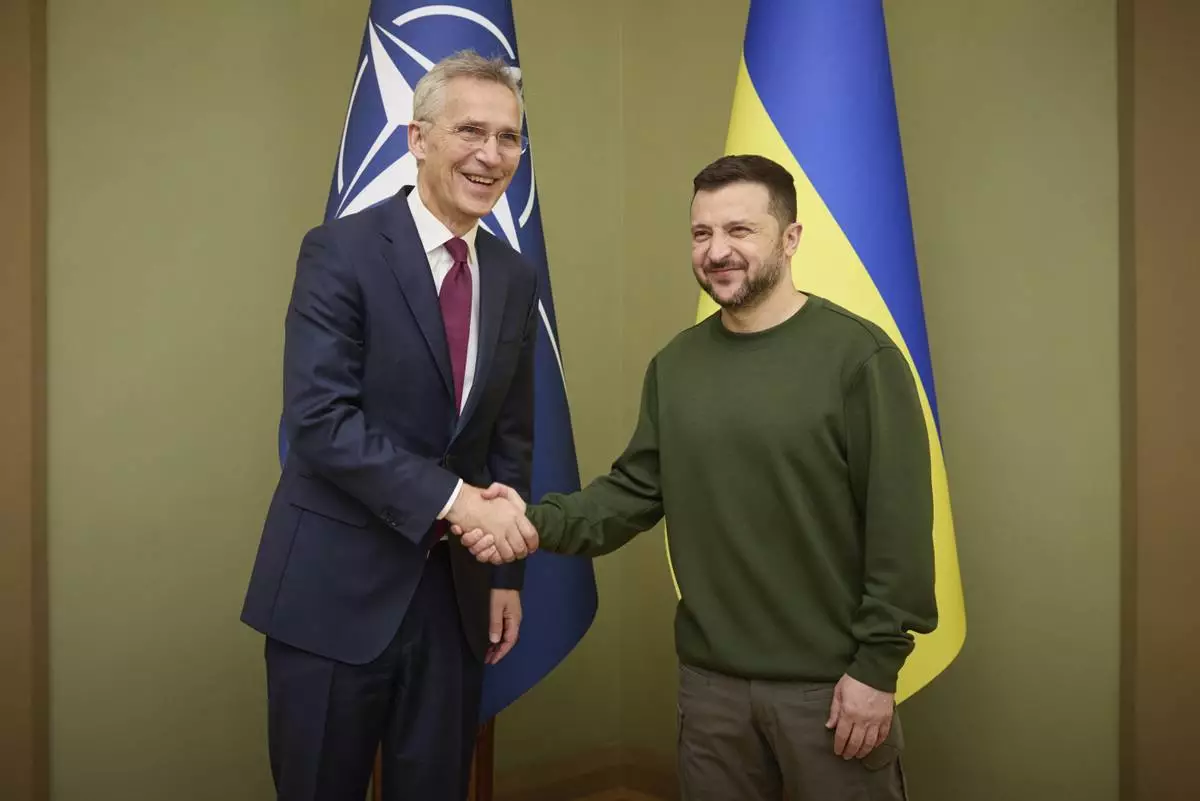
Ukrainian President Volodymyr Zelenskyy, right, welcomes NATO Secretary General Jens Stoltenberg during their meeting in Kyiv, Ukraine, Monday, April 29, 2024. (Ukrainian Presidential Press Office via AP)

Two women walk along a street in downtown Kyiv, Ukraine, Sunday, April 28, 2024. (AP Photo/Francisco Seco)

A woman sells toys in front of a building with windows protected by sandbags in Kyiv, Ukraine, Sunday, April 28, 2024. (AP Photo/Francisco Seco)
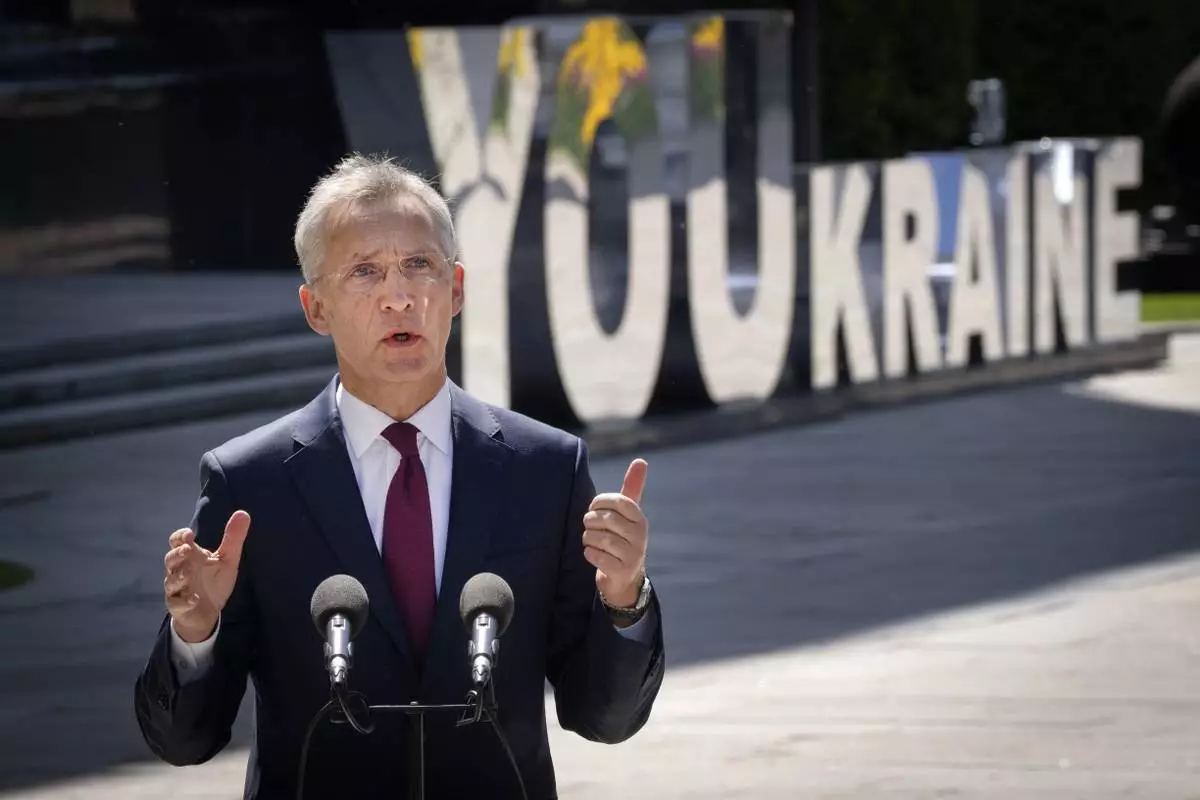
NATO Secretary General Jens Stoltenberg talks during his joint press conference with Ukrainian President Volodymyr Zelenskyy in Kyiv, Ukraine, Monday, April 29, 2024. (AP Photo/Efrem Lukatsky)

Ukrainian President Volodymyr Zelenskyy, right, welcomes NATO Secretary General Jens Stoltenberg during their meeting in Kyiv, Ukraine, Monday, April 29, 2024. (AP Photo/Efrem Lukatsky)

Ukrainian President Volodymyr Zelenskyy, right, talks with NATO Secretary General Jens Stoltenberg during their meeting in Kyiv Ukraine, Monday, April 29, 2024. (Ukrainian Presidential Press Office via AP)
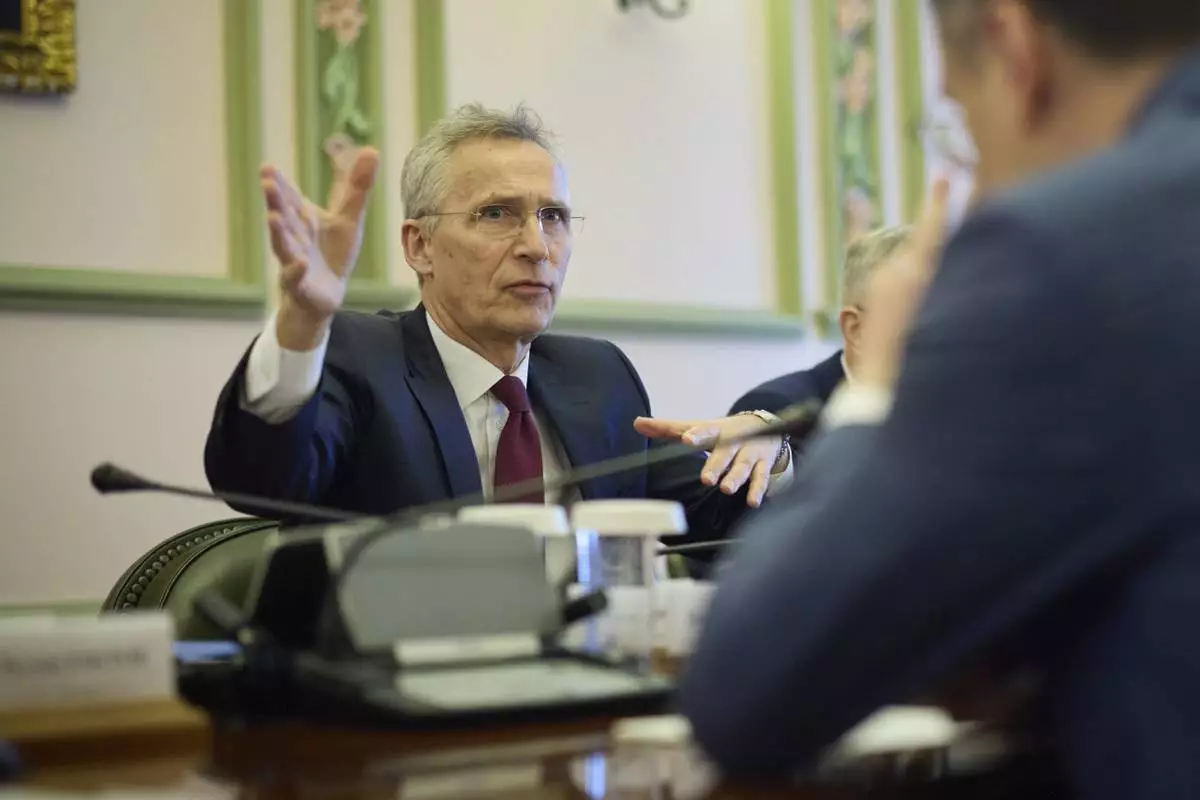
NATO Secretary General Jens Stoltenberg talks during his meeting with Ukrainian President Volodymyr Zelenskyy in Kyiv Ukraine, Monday, April 29, 2024. (Ukrainian Presidential Press Office via AP)

Ukrainian President Volodymyr Zelenskyy, left, welcomes NATO Secretary General Jens Stoltenberg walk before their press conference in Kyiv Ukraine, Monday, April 29, 2024. (AP Photo/Efrem Lukatsky)





